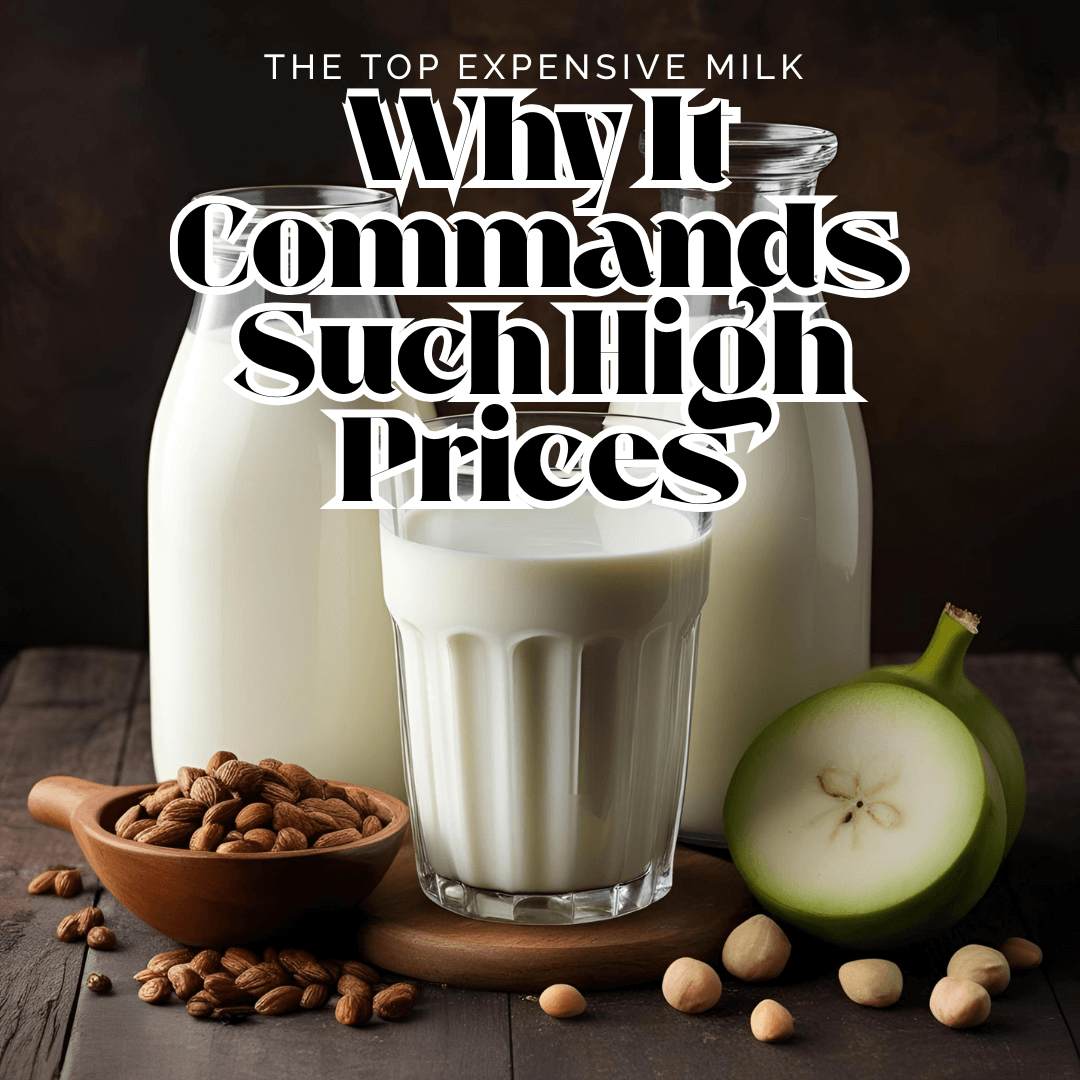Milk is an essential staple in many diets around the world, serving as a source of protein, calcium, and other essential nutrients. However, not all milk is created equal. While the price of most milk can be relatively affordable, there are certain types of milk that are incredibly expensive. These premium varieties often come with unique production methods, rare animals, and luxurious benefits that justify their high price tags. In this blog post, we’ll explore some of the most expensive types of milk and why they are worth every penny.
1. A2 Milk
A2 milk is one of the priciest options on the market today. This milk is produced from cows that only produce the A2 beta-casein protein, unlike regular milk, which contains a mixture of A1 and A2 proteins. Many people who experience discomfort with traditional milk have turned to A2 milk because it's believed to be easier to digest, especially for those with lactose intolerance or milk protein sensitivity. The price of A2 milk can be significantly higher than regular milk due to its selective breeding process and the fact that it is produced in smaller quantities. Additionally, the cost of production is higher because A2-producing cows are rarer, and the genetics must be carefully monitored.
2. Camel Milk
Camel milk has been used in Middle Eastern cultures for centuries, but it is only recently gaining recognition in other parts of the world. The price of camel milk can be quite steep, sometimes reaching over $20 per liter. This high price is due to the rarity of camels in dairy farming, the difficulty of milking camels (which are more challenging than cows), and the unique properties of the milk. Camel milk is rich in nutrients and is lower in fat compared to cow’s milk, making it a desirable choice for health-conscious consumers. Additionally, camel milk is often touted as a remedy for various health conditions, including diabetes and allergies, which also boosts its market value.
3. Mara Milk
Mara milk is one of the rarest and most expensive types of milk in the world, produced from cows in the Mara region of Kenya. This milk comes from indigenous breeds of cows, kanown for their ability to produce rich, creamy milk that is packed with flavor and nutrients. The cost of Mara milk is high due to its scarcity. The cows are kept on small-scale farms, and the milking process is extremely labor-intensive. Furthermore, these cows are fed a unique diet of indigenous grasses, which gives the milk its distinct taste. The scarcity, combined with the traditional and sustainable farming methods used in the region, contributes to its high price.
4. Jersey Cow Milk
Jersey cows, known for their rich and creamy milk, produce a high butterfat content, making their milk prized in the dairy world. This milk is often used to make premium cheeses, but it can also be sold as liquid milk for consumers who desire a richer, more indulgent dairy experience. The high cost of Jersey cow milk comes from its superior taste and quality, as well as the relatively smaller scale of Jersey cow production compared to standard dairy cows. Jersey cows require more specialized care, and their milk is produced in limited quantities, which raises its price. Additionally, the milk is often sold as organic or grass-fed, further increasing the cost.
5. Moose Milk
While moose milk is not widely available, it is considered a luxury in certain parts of the world. Moose milk is produced by moose, but it’s extremely difficult to obtain since moose are not traditionally milked animals. Only a few farms in Sweden and other parts of Scandinavia have successfully started milking moose, and the process is quite complicated. Moose milk contains twice as much fat and protein as cow’s milk, making it incredibly rich and creamy. Due to its rarity and the high cost of raising and milking moose, moose milk can sell for up to $1,000 per liter, making it one of the most expensive milks globally.
6. Donkey Milk
Donkey milk has been used for centuries, particularly in ancient Greece and Egypt, for its reputed health benefits. The high price of donkey milk comes from the limited supply. Donkeys produce only small quantities of milk compared to cows, and the milking process is tedious, often requiring hand milking. Donkey milk is rich in vitamins, minerals, and proteins, and it’s especially sought after for its anti-aging properties. It’s commonly used in high-end cosmetics and skincare products, which further increases its market value. In some cases, donkey milk can cost around $50 per liter, making it an exclusive and luxurious product.
Why Are These Milks So Expensive?
The primary reason these types of milk are so costly is rarity. Many of these milks come from animals that are not as commonly raised for milk production, such as camels, moose, and donkeys. Additionally, these animals produce milk in smaller quantities, making the supply more limited. The care required to raise these animals is also a significant factor, as they often require specialized diets, housing, and care that standard dairy cows do not. Finally, the processing and distribution of these milks are more labor-intensive, contributing to the higher cost.
While regular cow’s milk remains the most common and affordable option, these expensive varieties of milk offer unique qualities, health benefits, and rich flavors that make them desirable to consumers willing to pay a premium. From the digestive benefits of A2 milk to the luxurious richness of moose milk, these types of milk represent a niche but growing market of high-end dairy products. Whether you’re looking for health benefits, gourmet flavor, or simply want to indulge in something rare, these pricey milks are a testament to the diversity and complexity of the dairy world.






